The poncho sits in front of me like a melted scoop of orange sherbet.
When I first heard that LoveFrom, the creative collective founded by Jony Ive, had teamed up on a capsule collection with the Italian outdoor luxury fashion brand Moncler, I had little clue what to expect. I knew it was a riff on a shell coat, so my mind naturally went to the marshmallowy, black-and-white puffer jackets Moncler is known for.
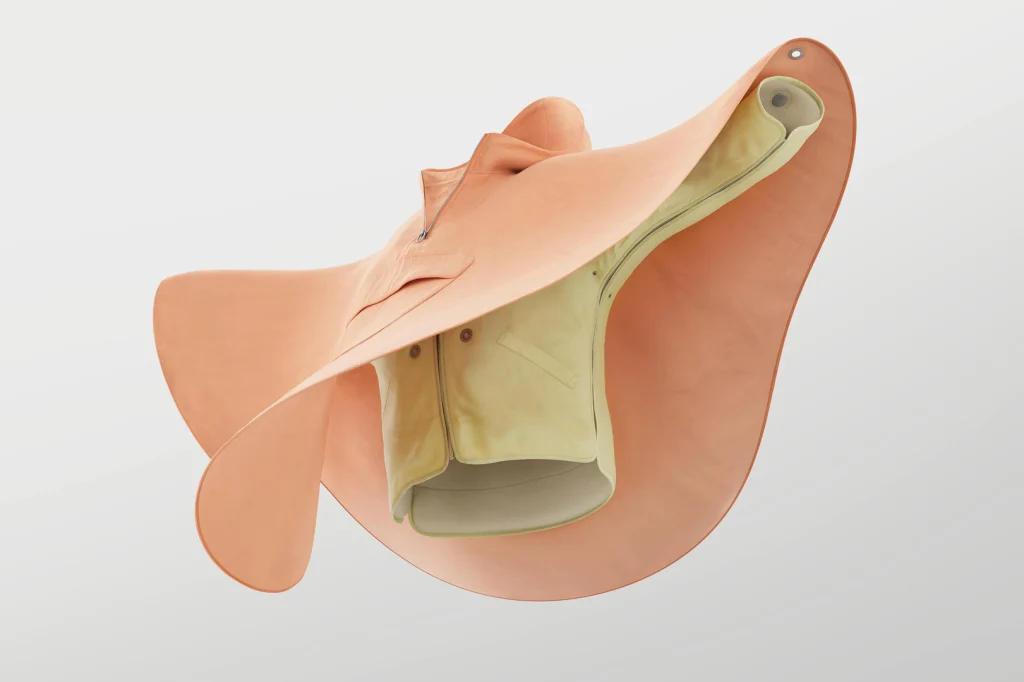
But walking through CEO Remo Ruffini’s living room in Milan, I’m surprised by the lightweight, gender-neutral pastel pieces standing on dress forms in front of me, built more for a fall walk than a ski lift.
This is “LoveFrom, Moncler,” a three-in-one shell jacket that goes on sale September 24 following four years of collaborative development. At the heart of the system is the Moncore, a down-filled vest. Atop this warm base, you can swap a field jacket, parka, or hooded poncho. The bulk of each layer is made from a single, uncut piece of recycled nylon that’s carefully folded to create a shape without seams, much like a kimono. It’s an approach that required using an unusually large, 7-foot loom that’s generally reserved for bed linens.
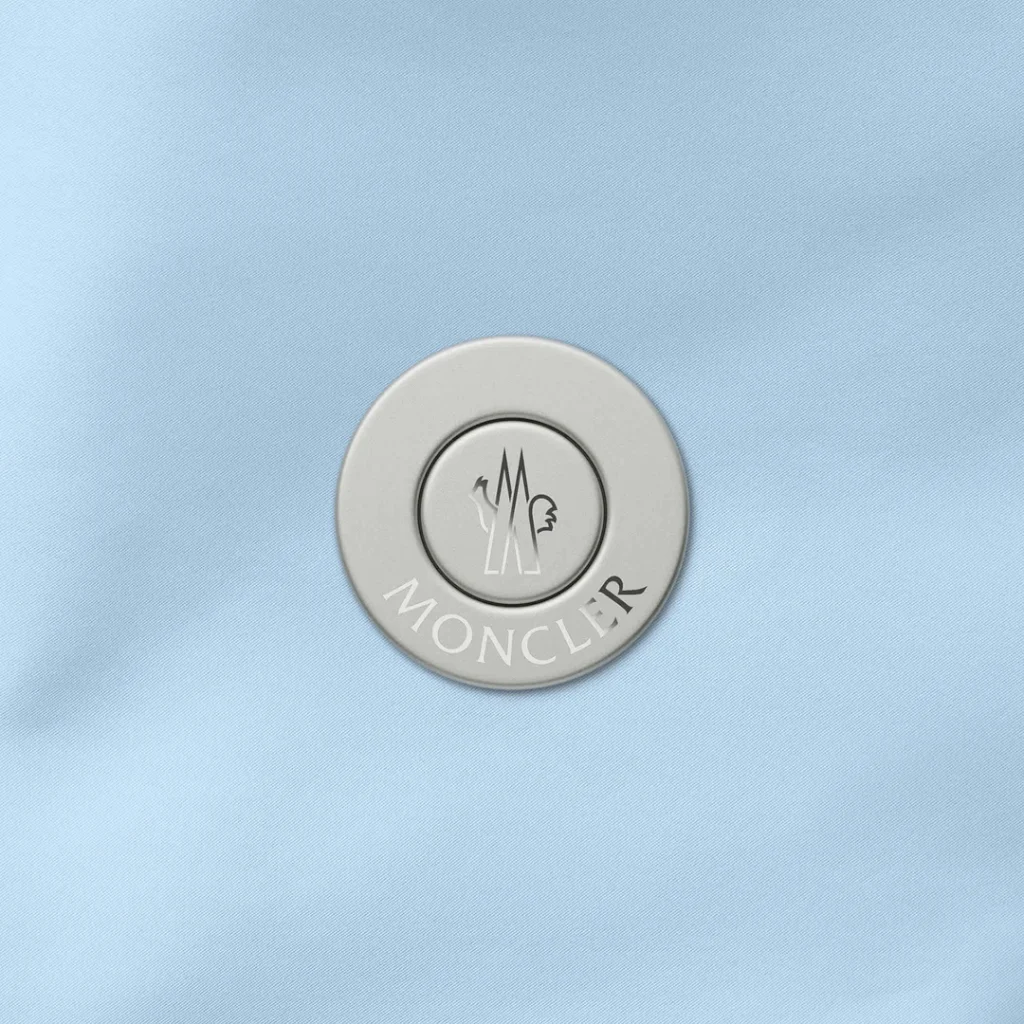
However, the star of the show is one of its smallest details: a new “duo button” that clasps with magnets, and makes the task of swapping between layers a cinch.
“There wasn’t some arrogant ambition around disruption [of buttons],” Ive says. “It was a very gentle, humble exploration.”
Building a more mindless jacket
After first meeting five years ago, Ruffini and Ive felt an immediate camaraderie; within a year, they were working on this first collaboration. Ruffini, who regularly collaborates with external fashion designers, says the opportunity felt like he was “going back to university to study with the master.” Ive was drawn to Ruffini’s readiness to explore and challenge his own processes.
“Fashion . . . is a very powerful word . . . that would tend to suggest I have no right or contribution to make. And I have no right and contribution to make if it’s made from a basis of arrogance and entitlement,” Ive says. “But if you’re really curious and lucky enough to work with someone like Remo and his team, you can move beyond, you know, the traditional boundaries.”
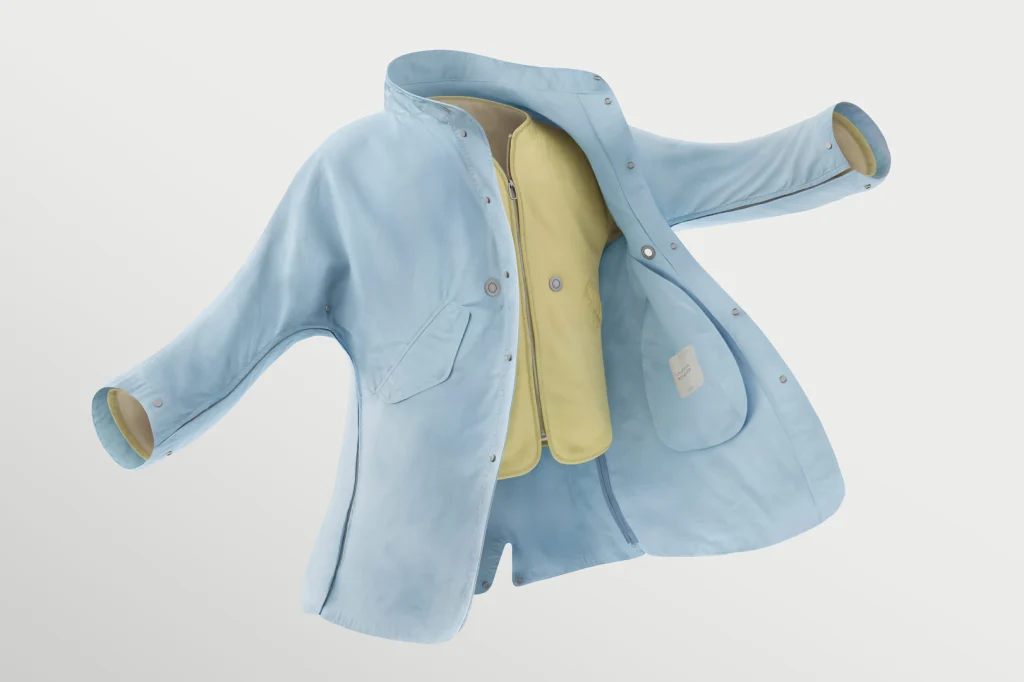
Modular jackets are nothing new in outdoor gear, but they often require fussing with zips or fasteners to link the layers together—a system that’s never as easy or elegant as that single zipper on the front of your coat. LoveFrom and Moncler agreed on the broad strokes of the three-shell system relatively quickly, and then LoveFrom tasked itself with figuring out how the shells would attach.
“How could you connect something where you didn’t have to pay attention? Velco’s sort of ingenious in that way. But I don’t think it’s satisfying,” Ive says.
Explorations into all methods of attachment followed. “I tried to do better zippers, and zippers are really hard,” Ive says with a laugh. The team eventually homed in on buttons, and dug deep into their history and permutations.
As Ive explains, the button as we know it addresses a tricky problem in design: How do you connect a hard object to a flexible one? The solution most buttons use is thread, because thread offers a pliable connection to a rigid system. When sewn onto cloth, everything moves but the button itself, allowing it to angle and squeeze into its buttonhole.
While Ive doesn’t necessarily frame it this way, LoveFrom ultimately took a different approach with its “duo button,” which joins two rigid parts through magnetism.
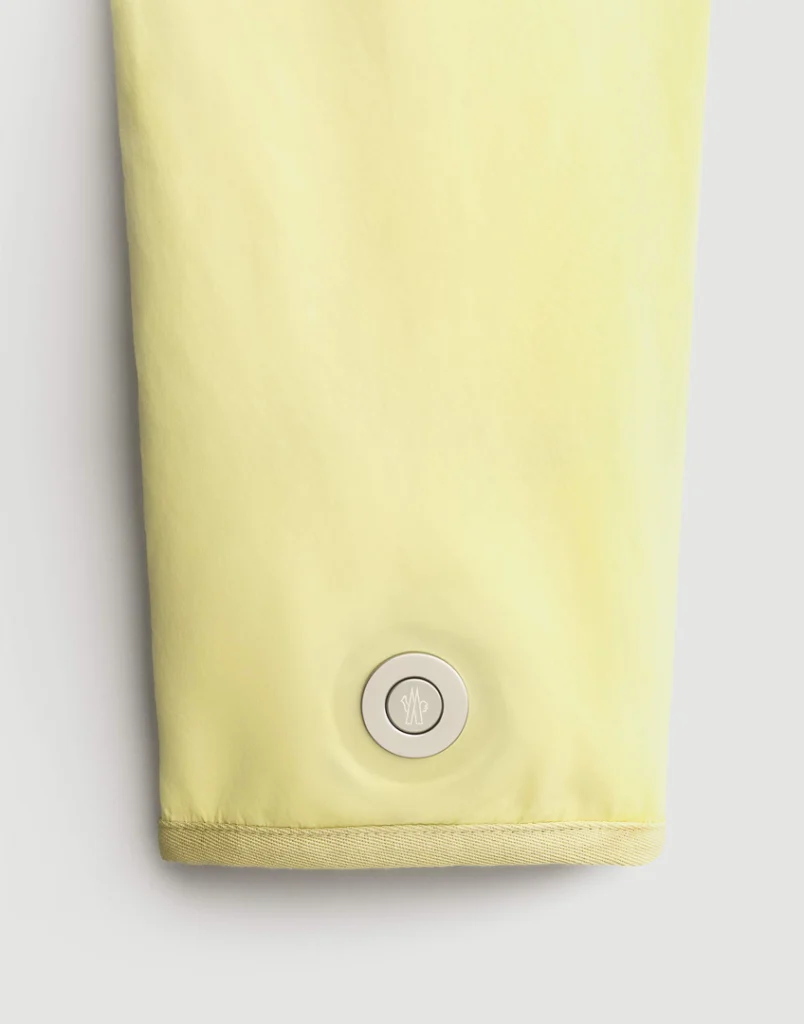
How the duo button works
The base of the button lives on the Moncore. That button is completely solid (like a coin) when you touch it, but an inner ring teases another function that’s impossible to discern by touch. The other half of the button—what you might consider the buttonhole—lives on the shells. It’s shaped like a little donut.

When the donut lands on the base, that’s when the magic trick happens. Two magnets inside the donut pull up a piston from the button base, which fills the donut hole and joins the two pieces with a satisfying click sound. (Why doesn’t the base piston flap or jangle? It actually has a weaker magnetic inside, which keeps it stuck to a small piece of steel in its core—until the more powerful donut magnets overpower it.)
When the button is joined, it couldn’t be easier to unbutton it, because the clothing button has transformed into a pressable button. You just push on the center piston that appears in the middle of the donut and it comes undone.
Of course, what you lose in this technical explanation is the most satisfying, addictive, fidget-spinner of a button I’ve ever used. As Ive, Ruffini, and I talk, I notice that we’re each holding the duo button, compulsively clicking it together and pushing it apart again and again.
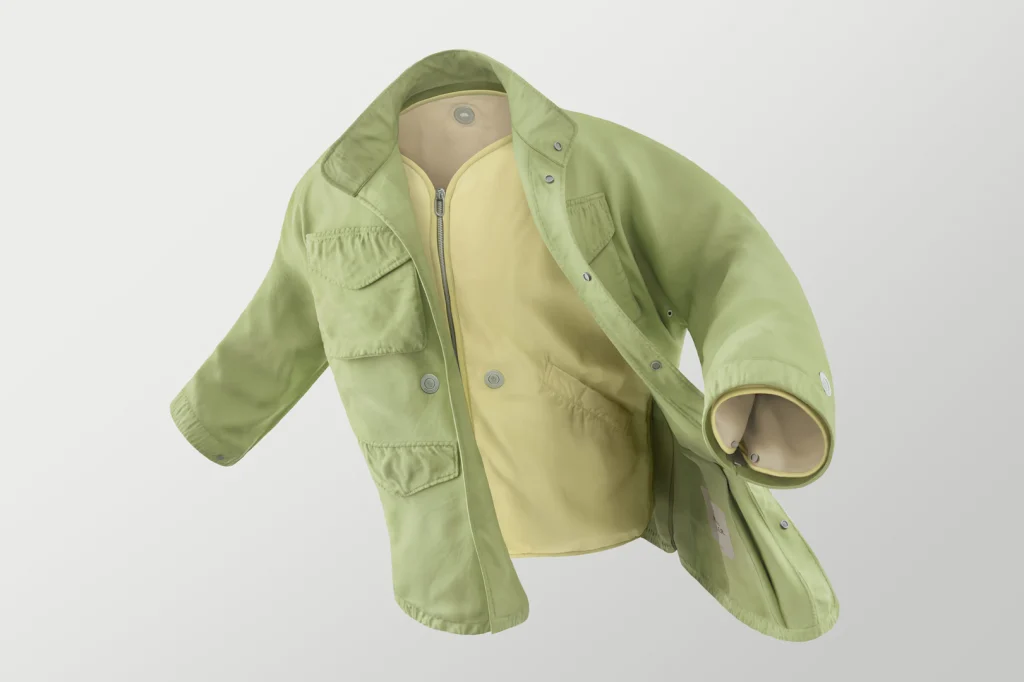
What could be a gimmick—“MagSafe for coats!”—feels more essential due to its careful execution. I’m surprised that the duo button feels so well integrated with the textile, and that it seems to always line up the right way and resist twisting or bunching fabric around it. LoveFrom had to develop new machinery and mechanical processes to execute the vision of the design, which came together over the course of 18 months. It even tuned the sonics of the duo button to ensure its mix of bronze, aluminum, and steel sounded right when it clicked together. But the ultimate result of all this thought is a mindless UX of doffing and donning the shell.
“When you put the shell on top, you don’t fix anything. It’s like, ‘pop pop pop!’” Ruffini says. Then the coat is connected and ready to go.
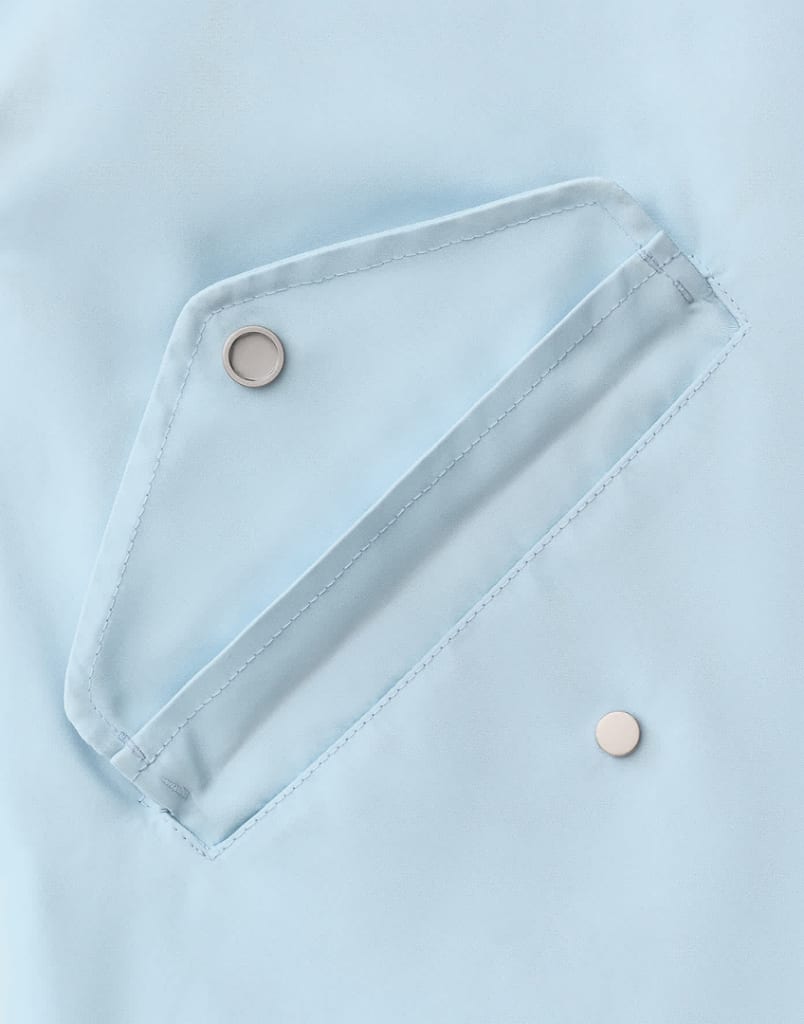
Feeling the love
Ruffini and Ive will both tell you that this partnership isn’t about money; that neither party requires the other to be successful. (And indeed, Moncler already collaborates with some of the biggest names in design through its Genius program each year, while LoveFrom’s client list includes companies ranging from Airbnb to Ferrari to OpenAI.)

“Your practice and your process leads to what you make,” Ive says. “And you know, I’ve become more and more focused on who I do things with, rather than the what. Because that defines your process and what you’re going to learn or not learn.”

That relationship, between LoveFrom and Moncler, is actually articulated in the duo button itself. The underside of the button features LoveFrom’s newly revealed logo, a bear mascot named Montgomery (LoveFrom is located on Montgomery Street in San Francisco). The top features the Moncler logo, which is a French cockerel.
While the two animals look a bit serious on the button, the brands will have more fun together as cartoons on materials, where Montgomery appears beside the longtime Moncler mascot, the Monduck. Their appearance includes comic-strip-like launder instructions inside the jacket (that double as an ode to the collaboration itself).
“I love seeing the world through the lens of a relationship, not a project,” Ive says. “That’s one of the things I’m learning much more about.”